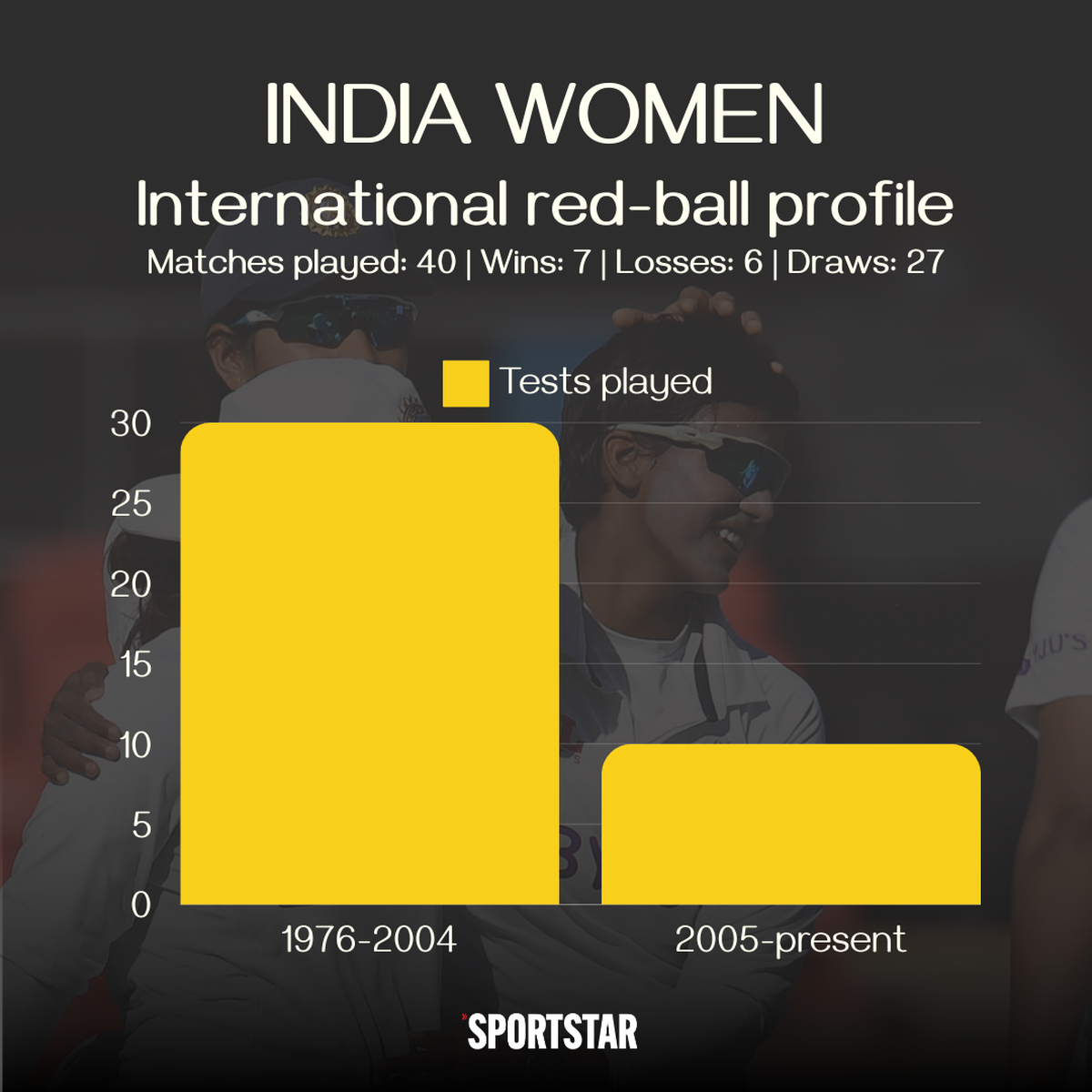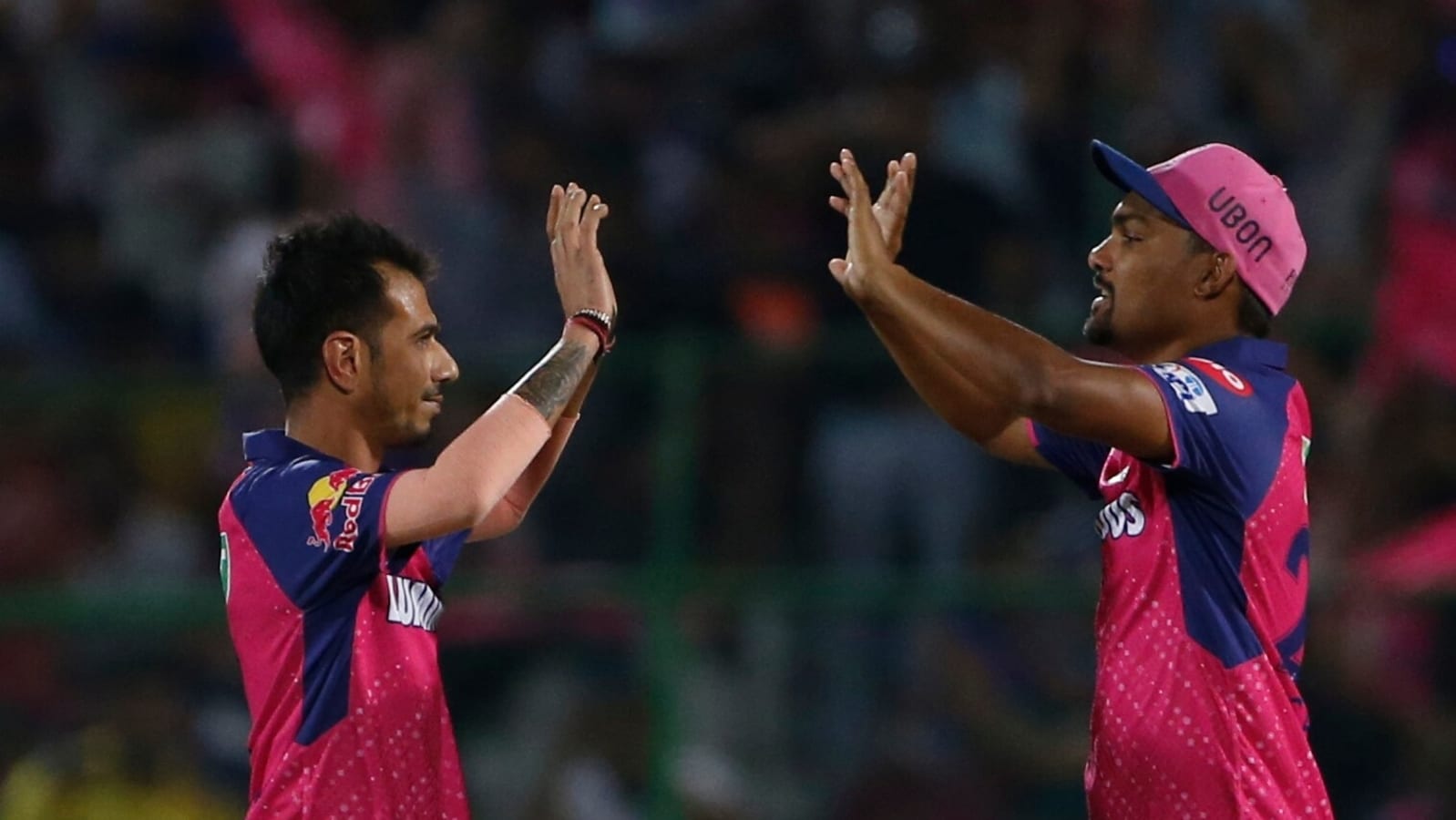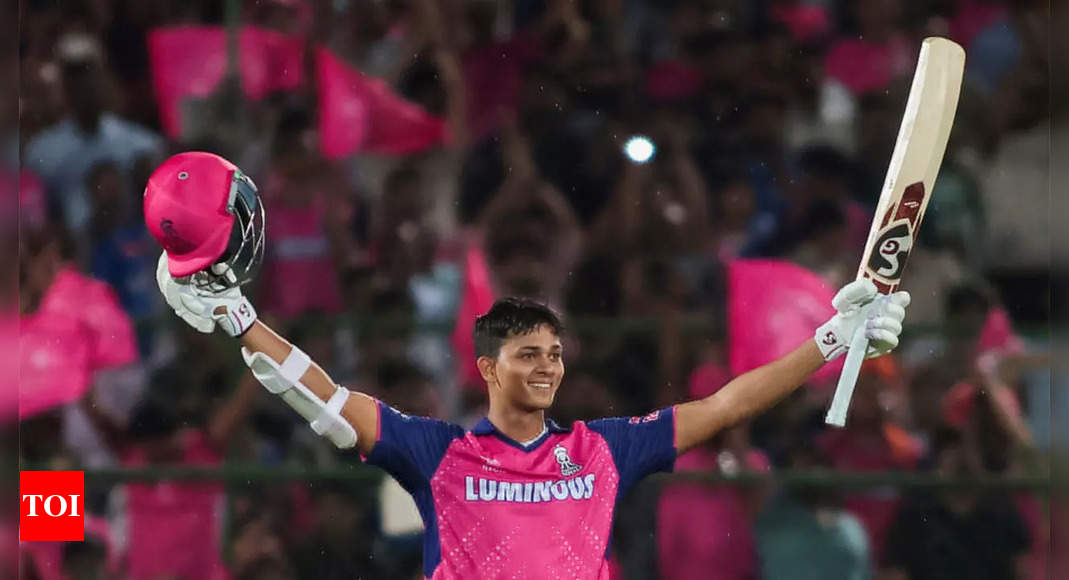[ad_1]
The scorching afternoon sun beat down upon the Maharashtra Cricket Stadium in Pune, setting the stage for a gripping showdown in the Senior Inter-Zonal Multi-Day Trophy final between East and South Zone. With temperatures hovering around 39°C, the empty stands witnessed a tense battle, where every run and wicket mattered.
In a nail-biting 30-minute passage of play, East’s Titas Sadhu and Annapurna Das thwarted a determined South led by Minnu Mani, clinching a one-wicket victory in the summit clash.
After a six-year hiatus, the tournament returned to India’s domestic cricket calendar, featuring six teams competing for top honours over a fortnight in Pune. South and North Zone secured direct places in the semifinals through a draw of lots.
Following quarterfinals and semifinals held in the main city, the action shifted to the outskirts for the final. The dry heat of Gahunje, compounded by its remote location, made conditions challenging for players and spectators alike. Dehydration loomed large, with tender coconut husks scattered around the dugouts, and players battling exhaustion under the blazing sun. Officials and players in the premises had to make refreshment arrangements in bulk to power through the conditions over the course of the final.
South encountered additional hurdles, with a team-wide illness and players like Arundhati Reddy and Shabnam Shakil requiring medical attention. Similarly, Titas struggled with a persistent cough during the decider.
The 37+ degree temperatures in Pune were hard on the players, some who needed medical attention too during the deciding fixture.
| Photo Credit:
LAVANYA LAKSHMI NARAYANAN
The 37+ degree temperatures in Pune were hard on the players, some who needed medical attention too during the deciding fixture.
| Photo Credit:
LAVANYA LAKSHMI NARAYANAN
Reflecting on the demanding conditions, East Zone’s coach, Umesh Sethi, emphasized the value of day matches in building stamina but suggested scheduling such fixtures during the winter months to alleviate the strain on players. “Day matches have a lot of value as it builds stamina and builds a habit of playing for a longer duration of time,” Sethi told Sportstar on the sidelines.
ALSO READ | Deepti Sharma – the jack of all trades seeking to master the game
“That said, I hope these fixtures are scheduled for winter. If it’s a one-day fixture, it’s fine to play in such trying conditions but in summer, these games are hard on the body and on the surface.
“The pitch doesn’t get time to get prepared properly and on the second day itself, it dries out and then ends up costing the side that has won the toss. In this game, we wanted to win the toss and bat. We were very happy to dismiss the opponent for a modest score but the pitch cracked up on day two. It made life difficult for us as well and we couldn’t take the lead. If we do these fixtures in winter, the surface won’t break down so much,” Sethi added.
Both teams demonstrated exceptional endurance despite facing adversity, resulting in an exhilarating finish. East Zone captain Deepti Sharma was awarded the winner’s cheque of INR 50 Lakh. Former India captain and BCCI Apex Council member, Shubhangi Kulkarni, watched the game from the Members’ Box in the South End and presented the winner’s trophy. This added a special significance to the event as Pune held sentimental value for Kulkarni’s cricketing career.
Shubhangi Kulkarnai, former India captain and BCCI Apex Council member, kept a close eye on proceedings in the tournament which was happening in her city – Pune.
| Photo Credit:
LAVANYA LAKSHMI NARAYANAN
Shubhangi Kulkarnai, former India captain and BCCI Apex Council member, kept a close eye on proceedings in the tournament which was happening in her city – Pune.
| Photo Credit:
LAVANYA LAKSHMI NARAYANAN
In perspective
“I was lucky to be in a place like Pune, which has been very progressive and safe for women,” she tells Sportstar. “Those days, a career in cricket came with a lot of apprehension—be it for safety, be it women playing what was considered a men’s game. When we played, we always had people come and watch. It began with curiosity about our attire—whether we would turn up in trousers, salwars, or skirts. We played in trousers, of course. Once that initial curiosity was satiated, the support was steady and more game-focused.”
Shubhangi comes from an era when Test cricket was the main format, with one-day cricket gradually gaining prominence as the format to promote women’s cricket.
“Our domestic cricket was mostly in the one-day format. But the semifinals of the Inter-State competition called the Nationals then, would be a two-day affair, and the final would be a three-day contest,” the 64-year-old remembers.

Between its first-ever Test against the West Indies in 1976 and its latest international red-ball fixture against Australia in December 2023, India has played 40 Tests, winning seven, losing six, and drawing 27. With the advent of the T20 format in the women’s ecosystem in 2004, the frequency of Tests dwindled. Between 1976 and 2004, India played 30 Tests, while from 2005 onwards, only 10 matches have been played.
“It’s certainly not the growth format, is it?”, former Australian captain Lisa Sthalekar, who has been tracking the scores of the tournament on the BCCI app from Australia, tells Sportstar.
“If we’re going to conquer the world, it is through T20 cricket. We’re already seeing Thailand and Papua New Guinea forge their way into the fold. Thailand even made it to an ICC event in 2020. You want to see more countries do that. That’s where the majority of the funding goes, and perhaps rightly so. But that doesn’t mean Test cricket shouldn’t exist in the women’s ecosystem. It does limit who is involved, but I think that’s okay as well. We can’t have everything.”
ALSO READ | The case for more women’s Tests — long overdue but not as straightforward
Red-ball’s geographics
Women’s Test cricket is currently dominated by Australia, England, and India, with South Africa starting to follow suit. Other nations, including old-world powers like New Zealand, have been parched for red-ball action. Even if one wants to add a few Tests to the schedule, it’s hard to find a window that does not have bilateral white-ball fixtures, franchise short-format tournaments like the Women’s Premier League, The Hundred, the Women’s Big Bash League, or ICC-recognised private initiatives like FairBreak Global.
“At the moment, the calendar for women’s cricket has come a long way from teams having just one or two major series a year at best. If we want more and more Test cricket, where are we slotting it in considering white-ball being the priority and varying economic capabilities to stage the longer format? Even in the men’s game, some countries go at a loss when they put on Test cricket. If you ask Ireland, they might feel differently about Test status now. We need to acknowledge that. But if there are countries that want to play Tests, then absolutely (fine). The players—all of them want to play Test cricket. Maybe we need to do an ICC World XI against whoever is successful among India, England, and Australia so it allows someone like Suzie Bates to play a Test match,” Sthalekar says.
ALSO READ | The trials and tribulations of Arundhati Reddy, cricket tragic awaiting her moment in the sun after falling out of favour
For a nation to excel in Test cricket, it is essential to have a strong foundation at the domestic level. India’s decision to bring back the Inter-Zonal tournament has made it the only country to have a comprehensive domestic series for women’s multi-day cricket. Unlike the men’s County system, England does not have an equivalent system for its women cricketers. Recently, Australia conducted a three-day match between the ‘Green’ and ‘Gold’ teams, which will now be a permanent part of its annual calendar. New Zealand’s Hallyburton Johnstone Shield, which used to feature two-, three-, or four-day fixtures, has been played under the 50-over format since the late 1990s.
Red is right
World Cup-winning former England skipper Charlotte Edwards, who now coaches a range of domestic outfits across England and Mumbai Indians in the WPL, believes lack of red-ball experience cost England in the one-off Test against India last December.
“In the Test match, we’ve seen that if your technique is not strong, you’ll get found out. Playing too much white-ball cricket can be detrimental to Tests and we need to find the right balance or even education through playing age-group red-ball cricket,” Edwards tells Sportstar.
“It’s something we’re looking to do here. Academies are starting to play two- or three-day cricket. It’s unbelievable that the girls go into international Test fixtures with just a handful of multi-day games under their belt if any at all. Compare this to the guys who have at least 30–40 red ball games to their names before they play the format internationally. That is something we’re determined to address. We know, at the Southern Vipers, that this is something we want to do. But something more concrete, like a tournament, is yet to take shape,” she adds.
England, a nation enamoured (or blindsided, depending on where you stand) by the men’s team’s ‘Bazball’ philosophy, has a women’s set-up where the playing style has been brisk. Where the women’s side struggles is in taking control of the game and slowing things down. It helped India eke out a draw in 2021 and thrash the same opponent by 347 runs a few months ago.
“England seems to have a decent approach to how they want to go about their T20 cricket. They want to be a bit more aggressive, and that helps their mindset. The mindset issue comes in Test cricket when you have to bat longer, and so a strong defence comes into the scheme of things. That might not be how they want to play their cricket, but that might be what is required as you then earn the right to bat. India did that brilliantly. India scored at over four runs an over throughout the innings. They were able to absorb pressure well thanks to a strong defence. Whenever an opportunity presented itself, they were able to dispatch balls that warranted more runs. I think that was a great template or blueprint on how to bat in Test cricket,” Edwards points out.
“The fact that there were so many bowled dismissals is a cause for concern, and I guess that’s where the strong defence comes into play. It was quite disappointing on that front to see us being completely outplayed, especially with the kind of batting we have,” she adds.
Necessity or luxury
Sthalekar remembers a time when former Australia Women’s head coach Matthew Mott (now with the England men’s white-ball side) brushed aside the need for red-ball experience.
“I remember asking Matthew Mott this question while doing commentary. My thought was that if you play the longer format, you get a better understanding of your skillset and how to pace your innings. He believed that a longer format doesn’t necessarily create great players. David Warner is a prime example of this—a T20 player who entered the Test arena. It’s not one-size-fits-all. My opinion is that red-ball cricket has developmental value,” she says.
The Senior Women’s Inter-Zonal Multi-Day Trophy did not draw crowds with negligible promotion of the tournament in Pune. The tournament also did not have live streaming of games available with fans following the fixtures on the BCCI’s website.
| Photo Credit:
LAVANYA LAKSHMI NARAYANAN
The Senior Women’s Inter-Zonal Multi-Day Trophy did not draw crowds with negligible promotion of the tournament in Pune. The tournament also did not have live streaming of games available with fans following the fixtures on the BCCI’s website.
| Photo Credit:
LAVANYA LAKSHMI NARAYANAN
“The fact that the BCCI has put on this tournament is encouraging foresight. They saw that the last two Tests against England and Australia ended triumphantly. They realise that this is a format that brings them great success, especially on home soil. This bodes well for those who want to play more Test cricket because they’ll be able to produce some wonderful players. This tournament showed that there were several players who put their hands up whom you don’t otherwise see on the circuit,” she adds.
Shubhangi is quick to point out that a mere Inter-Zonal is not the start and end of work needed to bolster India Women’s long-form cricketing smarts.
“In terms of skill development and technique, the longer version will certainly help. But it will be a challenge. Right now, the Inter-Zonal is a good format. Quality players who can adapt to the shorter versions and double up for red ball were in the mix. If we look at the inter-state level, we need to see if that is viable and if they have the resources to allow the format to trickle down to the grass-roots club/district level. It is going to be a challenge for all countries, including us,” she says.
As it stands, the international calendar features just one red-ball fixture, the Pink Ball game in the Women’s Ashes, to be held at the MCG in 2025. Meanwhile, the chicken and egg problem will continue: should more International Tests trigger more multi-day cricket at the domestic level, or should red-ball cricket be put in place regardless to bolster one’s foundations? Only time will tell.
[ad_2]
Source link





 (@lav_narayanan)
(@lav_narayanan) 






